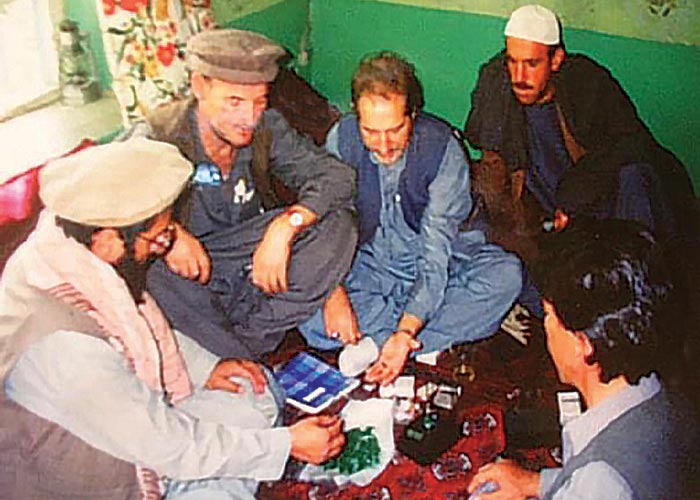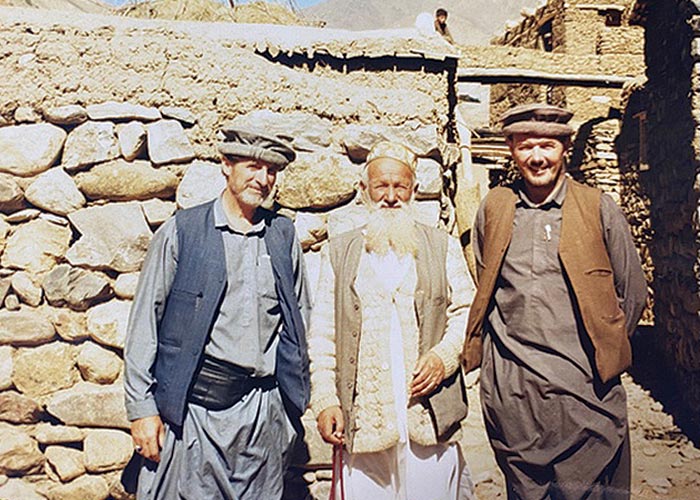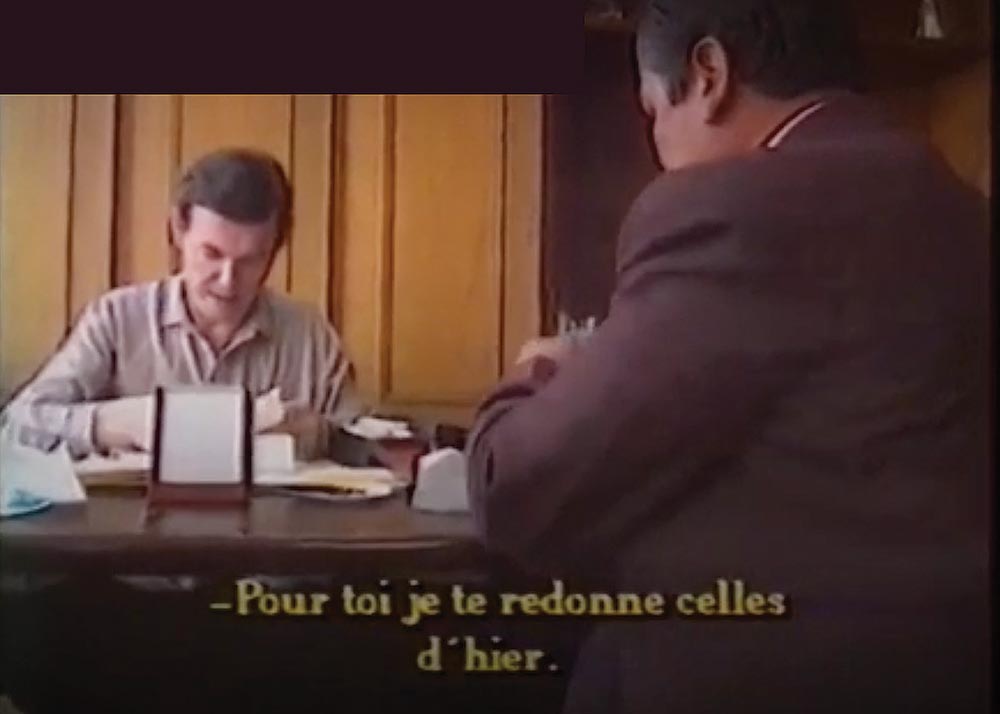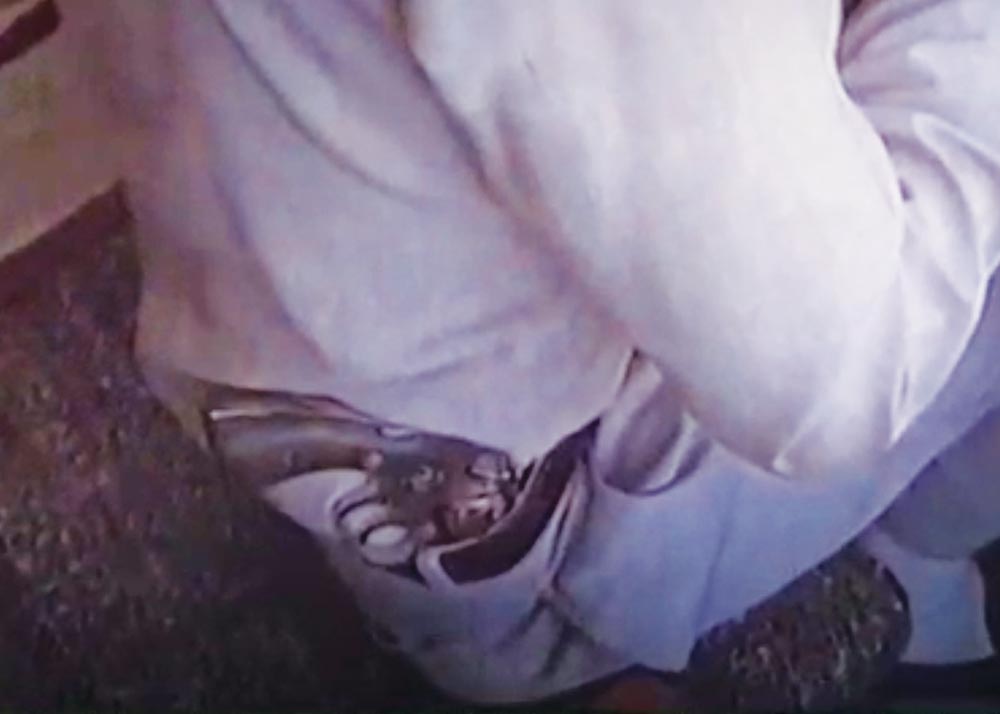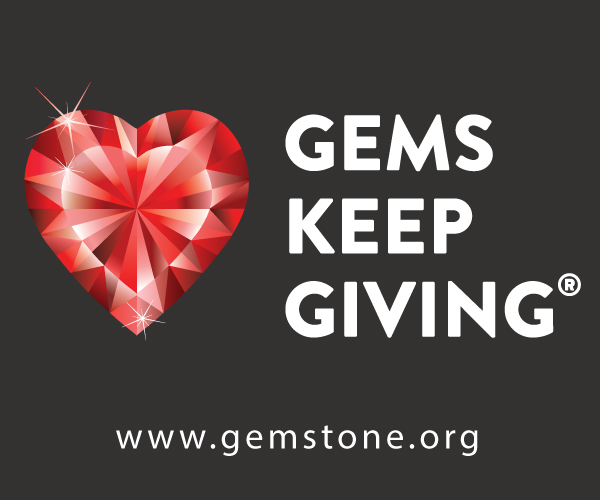
Estimated reading time: 27 minutes
Jean Claude Michelou was a fearless, one-of-a-kind adventurer and pioneer in the high-stakes world of colored gems. Be it working in the turbulent Colombian emerald trade or braving guerrilla warfare in Afghanistan, he helped change the game regarding ethics, sustainability, and education in the colored stone industry.
Jean Claude Michelou and I first met in 2007 in Dubai at the ICA Congress and got better acquainted during the following mine tour in East Africa. I had been invited to go on this trip by then ICA Executive Director Barbara Wheat to cover the event as Editor-in-Chief of an international jewelry magazine covering global trends in jewelry and gems. Little did I know at the time that I would be asked, some months later, to take over as Managing Editor of InColor, working for Barbara and Jean Claude, while continuing in my other position.
Over the years working with Jean Claude—JC for short—and our many hours of discussions, it was clear that his life’s trajectory was unlike that of most people, even those who travel the world in the gem trade. Thus, this article is intended to honor his memory, his work with InColor, and to explain a bit about this remarkable and sometimes complex individual and his journey—a journey that helped change and reform the global gem industry as well as the people whom he met and inspired along the way.
The following is a brief glance at his story, told through the words of his family and some of his many close friends…
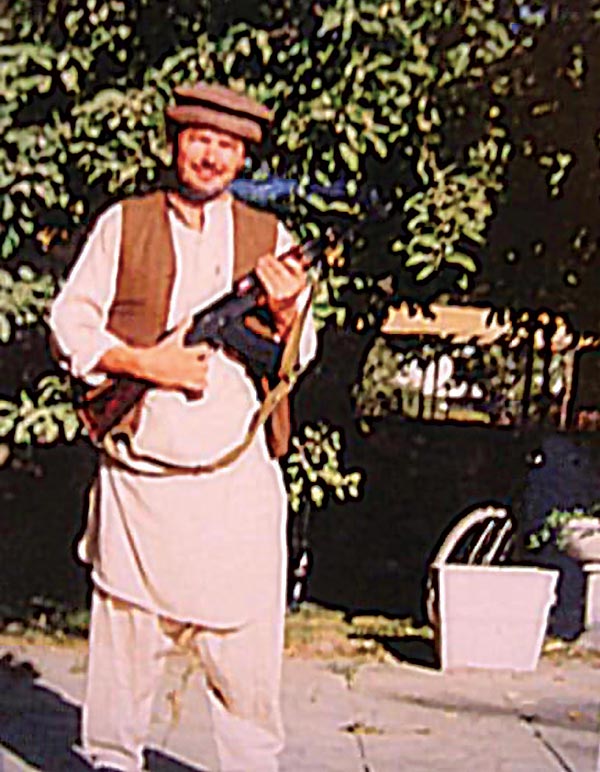
Ahmad Shah Massoud, known as the Lion of Panjshir, was a powerful guerrilla commander during the Afghan resistance against the Soviet occupation (December 1979 to February 1989). In the 1990s, Massoud led the government’s military wing against rival militias and then, following the rise of the Taliban, he led the primary opposition against its regime. The one area of Afghanistan that never fell to the Soviets nor to the Taliban was the Panjshir Valley (until 2021).
Surrounded by the rugged Hindu Kush mountains, this area has been known for centuries for its beautiful gemstones and, despite the wars, conflicts, and other dangers, a few gem dealers ventured there to seek its treasures. Massoud sought out one of these individuals, a man who was known for his emerald expertise—Jean Claude Michelou.
In 1991, accompanied by his good friend and mentor, a Belgian national named Roger [last name withheld], Jean Claude left for Afghanistan. But there was no easy way to get to there. Eventually, they ended up on a Red Cross/journalist flight from Paris. Kabul was by no means safe, and bombs could be heard exploding near the hotel. After arrival, they were taken to the Panjshir Valley by associates of Massoud, where they met the larger-than-life Lion.
JC commented about this visit: “We all got along fine. I was shown a lot of emeralds, visited the mines, and discussed with Massoud how we could do business together, despite the dangerous situation in Afghanistan.” The two men stayed a month in the country, grew a beard, and dressed like the locals, staying in the homes of some of the welcoming people of Panjshir.
Jean Claude said that he really enjoyed the trip to the Panjshir Valley, calling it an “epic” experience despite the evident risks.
So how did a business-educated Frenchman end up in such a dangerous place during those perilous times? Let’s go back a bit.
Jean Claude Michelou was born 7 October 1948 in Vanves, a small commune in the southwestern suburbs of Paris. His father and grandfather were butchers, but as a young man, he was uninterested in following in their footsteps. After graduation from the lycée (high school) at age 15, he attended business school in Paris (the ECCIP) before leaving for London at age 18.
“My father really enjoyed his life in London and quickly learned English,” comments his daughter, Zoe Michelou. “To support himself, he worked in restaurants and bars. He had many female friends and enjoyed the nightlife. He even played guitar and was part of a band.” It was not all fun and games, though. On a serious side, he studied at the London College of International Business, earning a Master’s Degree.
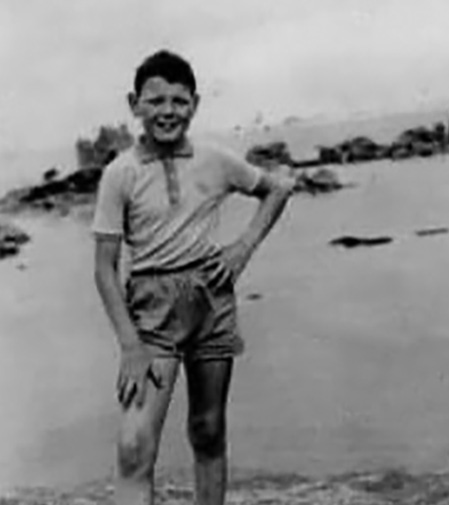
Called back to do military service in France, Jean Claude opted instead to do civilian service in Mexico. While there, he learned Spanish and taught economics and business at the University of Mexico. He married a Mexican-Lebanese woman and ended up staying seven years. Her parents wanted him to quit teaching and join the family’s clothing manufacturing business, but he declined. This ultimately led to a divorce.
JC then took a job with the sporting goods brand, Spalding. After a year, he was promoted to Regional Director for South America and sent to Brazil, Chile, and Peru. It was on one of his Brazilian trips that he met Roger, who was in the emerald business. Roger became a mentor and one of his closest friends, like a brother.
“My father was intrigued by the stones, and Roger taught him how to buy and sell,” adds Zoe. Starting small, but losing money at first, Jean Claude persevered. Not long after, he began trading Brazilian gems in Europe and the U.S., and did so well that he quit Spalding.
JC then moved to the Dominican Republic for business and, on a trip to Colombia, he met and fell in love with a Colombian woman. The two returned to Santo Domingo, before later moving back to Colombia permanently in 1977.
Colombia – Home for 36 Years
Once in Colombia, JC wanted to buy and sell Colombian emeralds, but at that time, however, it was not so easy. To make ends meet, he went into the restaurant business for several years to make enough money to start. It wasn’t long after that he met Victor Carranza, the so-called Emerald Czar, one of the most powerful players on the Colombian emerald scene. Carranza helped him buy larger parcels on consignment to sell abroad. Jean Claude traveled to the mines nearly every weekend to obtain rough, and business was flourishing. Some of his best clients were the Korean and Japanese dealers who came to Bogota in the 1980s.
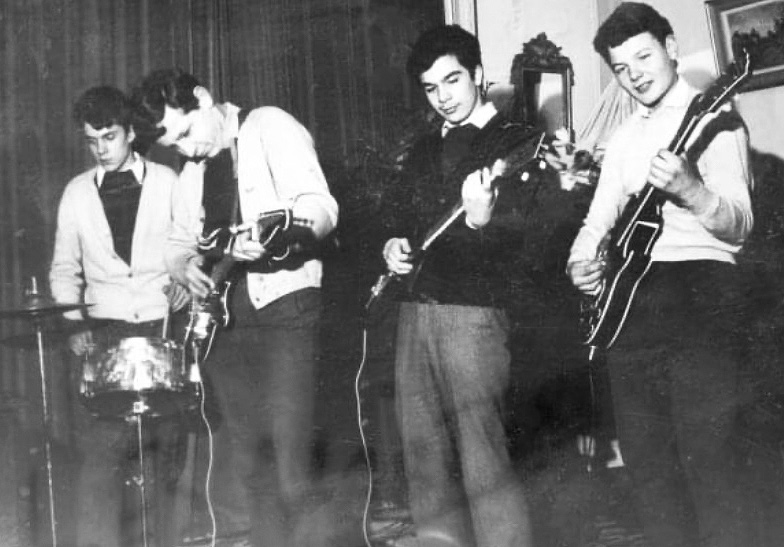
“I met Jean Claude in the late 1980s through a mutual friend,” recalls Ricardo Mazalan, an AP photojournalist from Argentina, who was there for a soccer tournament and, like JC, ended up staying. “I remember the first time I went to his large home in the traditional La Candelaria neighborhood, a few blocks from the main square. He had purchased two houses, renovated them, and combined the two into one beautiful traditional home.”
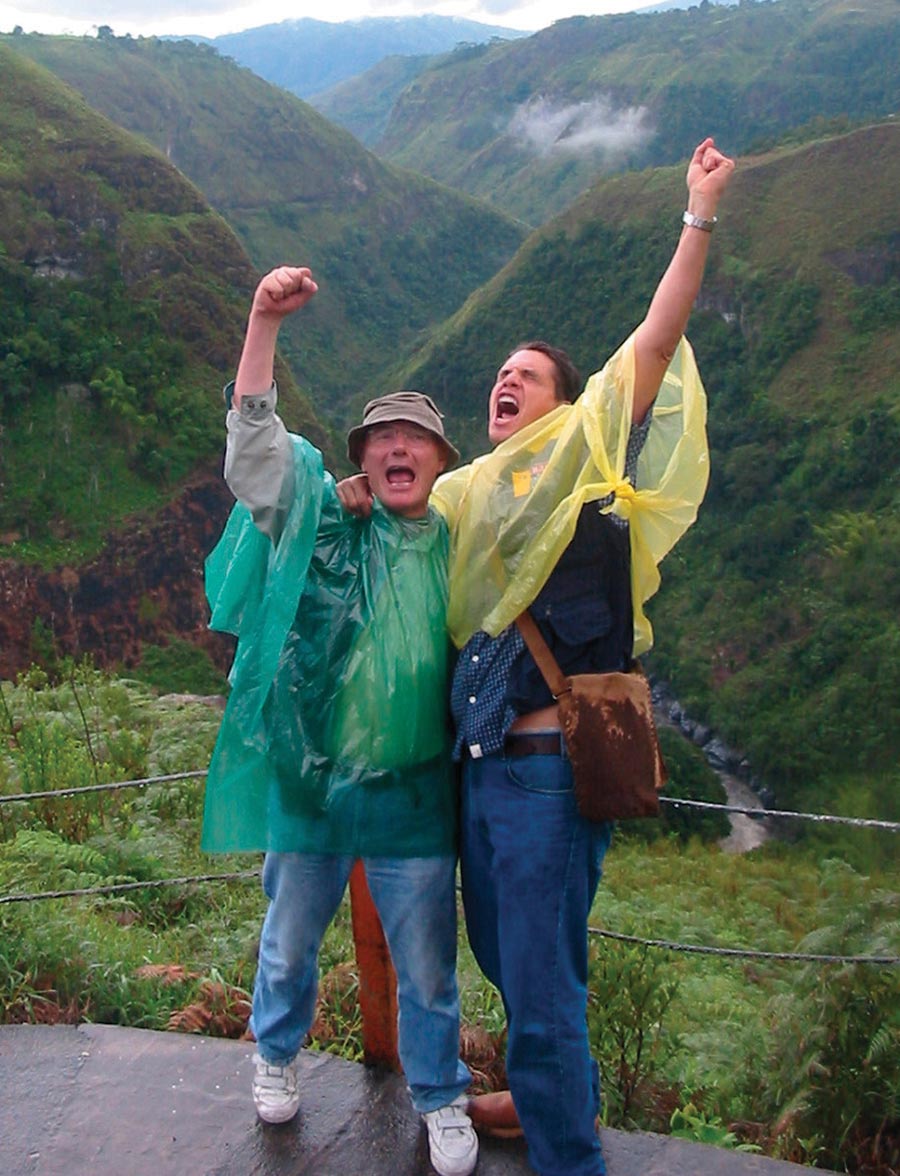
Mazalan traveled with Jean Claude throughout Colombia. “I visited the Muzo and Cosquez mines with him at least four times, and we also traveled around the country to learn about its culture and its people. Jean Claude loved Colombia, especially the mountains in the south. He was well known in the expat community and became the go-to contact for foreigners looking to purchase emeralds or do other business in Colombia. He was very street-wise and knew how to help people deal safely in a business that was, at that time, rife with danger.”
Another close friend was Gilles Trequesser, a Reuters correspondent for Latin America in the mid-1980s to mid-1990s who often stayed at JC’s home during his trips to Colombia. They met in 1986 and Trequesser quickly became part of the expat gang that often congregated at the large La Candelaria home. “JC was a great source of information to us journalists, who covered the Colombian scene during this difficult decade. We also knew what we could report and what was off-the-record in terms of some of the major personalities in the emerald business and beyond.”
A Reuters photojournalist covering the world story, which Colombia had become in the 1980s, was Zoraida Diaz, who met JC through her close friends Trequesser and Mazalan. “My memories of Colombia are incomplete without Jean Claude Michelou. His beautiful Spanish-colonial house was a magnet for those of us— photographers, journalists, artists, emerald enthusiasts, and even diplomats—who needed an oasis from the mayhem of the 1980s and early 1990s. His parties were legendary, as was his zest for life and friendship.” Diaz even recalls an image of Jean Claude with his record player, acting as the DJ for his weekend gatherings.
Diaz also reported on emeralds and met Victor Carranza, who gave her rare approval to visit and photograph his mines in Quipama (Muzo). During these trips, she took pictures of the many guaqueros—artisanal miners who searched for emeralds in the rivers and in the tailings from the large mines. She also recalls the danger for journalists and those involved in the emerald trade. “On the lower floors of the Reuters building were many emerald dealers, and one day, a guy was shot right in the elevator. Those were scary times, but Jean Claude knew his way around, had lots of drive, and survived the times.” She adds that the last time she saw him was in Paris in 2011, when she took this photo of him and Trequesser.
A gemstone dealer, who became part of JC’s extended family (and Zoe’s godfather), and kept in close contact over the years, was Francesco Salvia, from Italy. “One of my friends arranged for me to meet Jean Claude in Colombia to purchase emeralds,” he reminisces. “He kindly met me at the airport in Bogota, and at baggage claim, there was a gun fight right in front of us. Then, later at his office, there was another gun battle in the square. This unsettling introduction was only the beginning of many times during those tumultuous years that I felt unsafe in Colombia.”
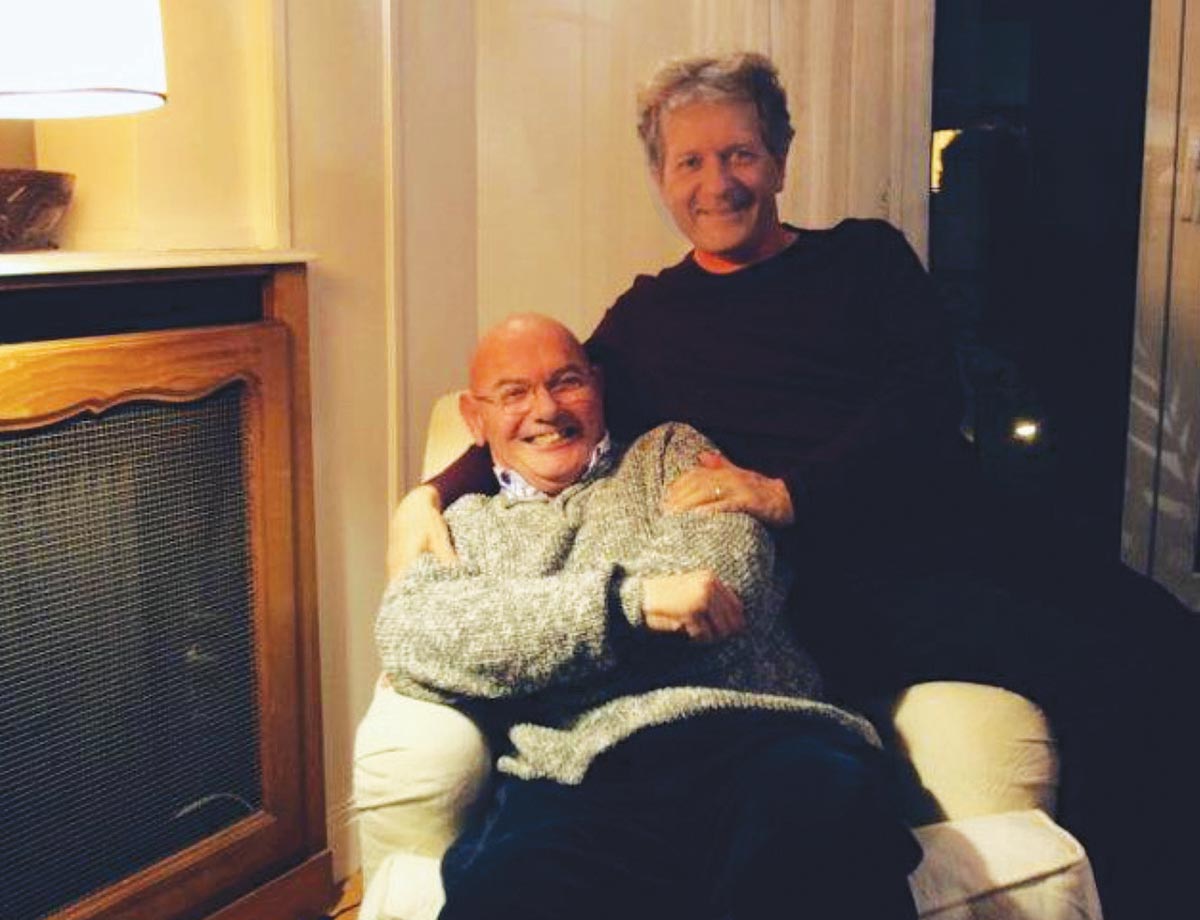
Salvia stayed at JC’s home on many of his trips to Colombia and remembers fondly the good times enjoyed by local friends and expats alike. “While the week was all serious work, the weekends became a great party. JC loved music, all kinds, especially jazz and rock ‘n roll.” Salvia also introduced Jean Claude to colored gemstone traders in Thailand, after which JC began selling colored gems in addition to emeralds.

Because of JC’s reputation as the go-to person for information on Colombia’s emerald scene, he was approached by several TV and film producers. In 1988, he was featured in the documentary, L’Émeraud de Colombie by noted French filmmaker Patrick Voillot. That same year, a major French television channel, TF1, featured him in a four-part series on Colombian emeralds entitled La Fièvre Verte on its magazine-format show 52 sur la Une.
Interestingly, the series ends with him removing a pistol from his pocket when he arrives home after work. Other videos also show him carrying a holstered gun, even when greeting people in his office—further testament to the times during the 1980s and early 1990s, as well as a reaction to having been robbed on several occasions. “We all wore guns,” he would say. “It was normal, then.”
La Fievre Verte brought more than added fame to Jean Claude. A woman who had worked for the press agent for the film, Audrey Dauman, returned a year later with her cousin Nathalie Noymiss on vacation. Salvia explains, “Audrey became my girlfriend, while Jean Claude fell in love with and married her cousin. The wedding was a civil ceremony at the French Embassy, with a nice reception in the evening.” (JC’s marriage to his Colombian wife lasted for about eight years, after which they divorced.)
Screenshots of two frames in a short video, filmed in the 1980s, show a day in the working life of Jean Claude Michelou. Left, he is showing emeralds to a prospective buyer in his Bogota office, while a close-up of him sitting down shows the ever-present gun used for protection.
Reminiscing about those unforgettable years, Nathalie says that Jean Claude showed her and Audrey around Colombia for nearly a month in 1989. “At that time, there were no tourists because of all the risks, but JC knew how to get places. We had a wonderful time.” She also “fell in love with Colombia.” Some months later, on a trip to France, Jean Claude met up with Nathalie again and, in 1990, she returned to Colombia to marry him.
In 1991, following the end of the emerald wars of the 1980s, the situation began to normalize in Colombia and, over time, much of the drama of that era became but a memory.
JC’s business grew as did his reputation for being the man to see for emeralds. He was also a big advocate for Colombia, and continued to help people wanting to trade there.
To return to 1991, where we started this narrative, JC made the first of two trips to Afghanistan, returning just before the birth of his and Nathalie’s only child, Zoe, in October. He and Massoud discussed how the Afghans could do business with Europe and other parts of the world and made some contacts for them.
JC took the Panjshir emeralds back to Colombia where he showed them to Carranza. While appreciating their beauty and similarity to Colombian stones, the Emerald Czar was firm that JC should not sell them in Colombia. Heeding the warning, JC took the green gems to Asia and Europe, where he bought rubies, sapphires, and other stones, and brought them back to Colombia.
Zoe notes that, on her father’s second trip to Afghanistan in 1993, he sold the Panjshir emeralds through dealers in France who had buyers on the Place Vendôme. “That trip was much shorter than the first,” recalls Nathalie. “He became quite sick with a bacterial infection and returned early. “It took three months for him to recover.” [The 1993 meeting with Massoud was noted in Jean-Christophe Notin’s book La Guerre de l’Ombre des Français en Afghanistan: 1979-2011, along with comments from JC about the estimated production and sales of emeralds from the region.]
During the 1990s, Jean Claude encouraged his wife, who was a trained surgical nurse, to try her hand at jewelry design, using the stones he sourced from around the world. Earning a G.G. from GIA and an equivalent certificate from Canada, Nathalie became a gem expert and a successful designer in her own right, selling under her maiden name.
“In 1994, tragedy struck,” laments Nathalie. Their good friend and mentor, Roger, was tortured and killed in Brazil during a robbery of his gemstones. “This brutal slaying and its mysterious circumstances had such a profound effect on Jean Claude that he seriously considered leaving the gem business.” In time, though, he slowly recovered from the shock and decided to keep going.
A different kind of shock came in 2000. “JC had a heart attack,” explains Nathalie, adding that they returned to Paris for treatment, and began a period of travel between Colombia and France. Eventually, the marriage faltered, and he and Nathalie divorced in 2005. “He had earlier sold the lovely home in La Candelaria in 2003, something we both regretted,” she adds.
In 2009, because of more serious health reasons, JC moved permanently back to Paris, although he returned to Colombia often in addition to travel to Pakistan, Sri Lanka, Africa, and Asia. That year, he reminisced that he “spent only 65 days at home, the rest on flights and in hotels.”
Aside from business, Jean Claude visited Colombia often to spend time with his three children who were there, Nathalie, Vanessa, and Yannick, with whom he maintained a very close relationship. Zoe also accompanied him on these trips, and the four children are still all very close to each other, even though they now live on four separate continents.
The eldest daughter, also named Nathalie, was born in Santo Domingo. She recalls that JC was very attentive to his children, even after the divorce from her mother. “He taught me about music and regaled us with the many adventures he had during his amazing travels. He was a free spirit, spontaneous, and he loved Colombia.”
Vanessa, the second daughter says that even after JC left for Europe, “he always had a warm place in his heart for Colombia. As we were growing up, he wanted to be in our lives, even though we did not live together.” The family had reunions in both Colombia and in France over the years. “We were planning another when Covid hit. His passing hit me very hard. I am still not over it. It is just so sad, as he was starting a new chapter of his life in Thailand.”
JC’s son Yannick noted that he worked hard, but his children came first. “When I was young, I had some heart issues, and my father took me to France where the doctors at the hospital saved my life.” Even when he was 7 or 8 years old, Yannick knew that his father was someone important as people would approach him on the street. “They wanted to show him their emeralds and get his opinion about something or other,” he recalls. “We did not always agree on things, but he was always there for us.”
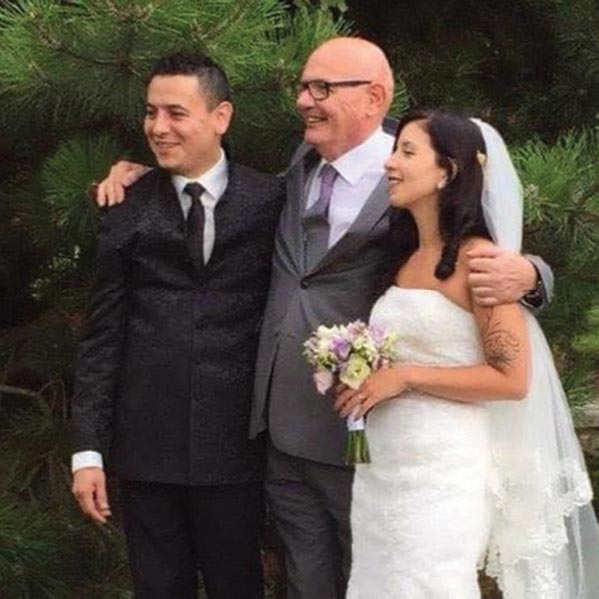
His daughter Nathalie adds that her father’s favorite place was the beautiful high desert called Páramo de las Papas, near the town of San Agustin in the southern part of Colombia. It is there that he wanted his ashes to be scattered and where his four children will carry out his last wishes.
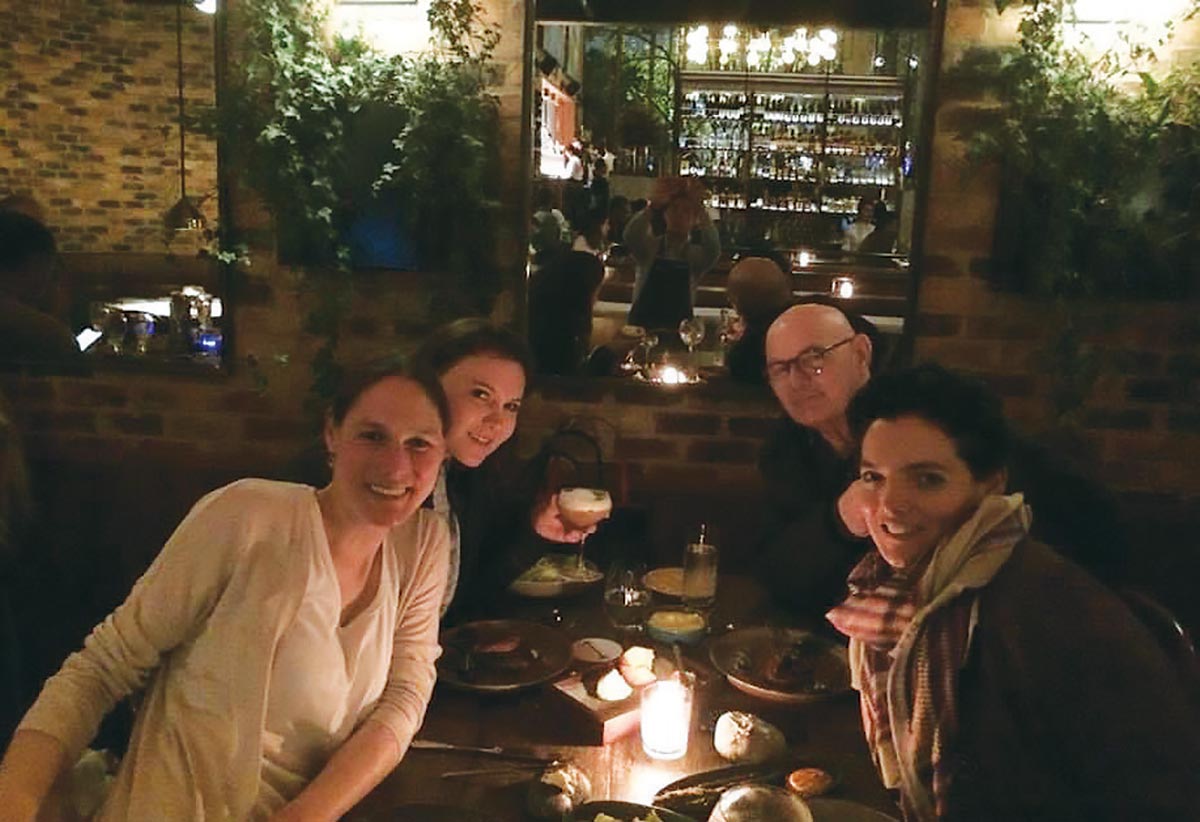
International Participation
Guillermo Galvis, President of Colombia’s Emerald Exporters Association, has known Jean Claude for more than two decades. “Jean Claude became friends with everyone in the emerald industry. From his start as a dealer, he went on to help the sector open up internationally. He not only brought in buyers, but he promoted Colombian emeralds overseas and helped develop a gem lab. He co-founded the First Emerald Congress in 1998, bringing in global players. He was truly a bridge to the world, always thinking about the next step.”
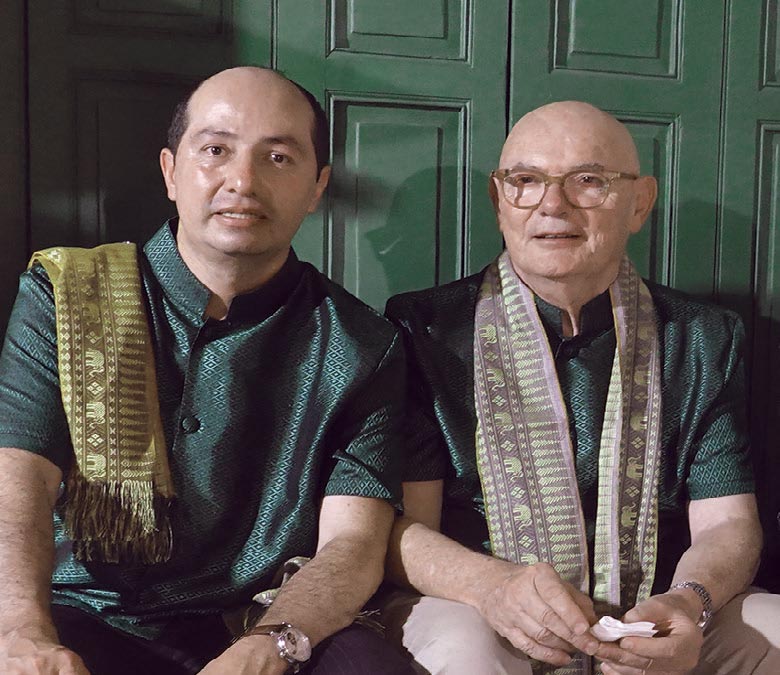
Years later, JC was again instrumental in helping Galvis organize the World Emerald Symposiums in 2015 and 2018, “and he had even started working on the next one,” sighs Galvis. Among the speakers, JC brought in representatives from the Organisation for Economic Co-Operation (OECD) and the Responsible Jewellery Council (RJC), in keeping with his determination to put the global emerald industry on a path to corporate social responsibility (CSR) and sustainability. “JC was one of our compadres. With his passing, we feel like we’ve lost one of our own,” laments Galvis.
[As a side detail… During the 2018 World Emerald Symposium, Jean Claude celebrated his 70th birthday and his daughter Nathalie organized a party at a friend’s lovely home in his old La Candelaria neighborhood. All of us invitees had a wonderful time and got to meet Nathalie and some of his Colombian friends.]
In 1983, a group of gem traders created the International Colored Gemstone Association (ICA), to address the challenges facing the gem industry and improve communication within the trade. Feeling that this organization could elevate the sector, JC joined in 1986, and was the Ambassador to Colombia for many years. Taking an even more active role, he served as Vice President, first under Joe Menzie, ICA President from 2003 to 2007, and then under successive presidents, as well as a board member for 18 years. “Jean Claude was a close friend and often controversial, but pushed what he thought was best,” comments Menzie. “At the end of the day, he earned a lot of respect for getting things done. He didn’t just talk the talk. He walked the walk.”
During his tenure, Menzie implemented a strategy to bring the ICA Ambassadors into the conversation talking about their specific markets and how this information could benefit the trade.
Barbara Wheat, former ICA Executive Director, recalls this era. “JC and I contracted Ya’akov Almor and his company to create the ICA Gazette to spread this information.” Later, drawing on her publishing experience, Barbara worked with him and Jean Claude to transform the Gazette into InColor, in keeping with the ICA’s mission of promoting colored gems. JC also served as Chairman of the Communications Committee for several years.

Menzie adds that “JC advocated—often with opposition—for members of ICA to be aware of social issues. He often fought with the Board of Directors to get money for worthwhile projects.”
“Jean Claude was the conscience of ICA,” states Bryan Pavlik, a close friend for more than a quarter century. “He was always there to give advice, or help, or say when things weren’t right.”
“For the past few years, I have worked continuously with JC on a couple of projects,” says Ioannis Alexandris, CEO of Gemolithos and current Chairman of the ICA Communications Committee.
“He had a strong personality and a sharp mind, and was never afraid to give his opinion. We all know about his expertise in the gem industry, but we should also know that he was ahead of his time in spirit and vision, which resulted in him trying to eliminate some dusty and antiquated rules and attitudes,” adds Alexandris.
“In the early 2000s, the World Bank had meetings in Washington DC about conflict diamonds and issues involving colored gemstone mining,” continues Menzie. “Jean Claude and I went to these meetings, along with other stakeholders, to give our opinions.” Afterwards, both men consulted with the World Bank on concerns relating to sustainability, ethics, education, and child labor. The goal was to develop programs to address these issues. “JC soon became the go-to person for advising on solutions.”
In addition to working with Jean Claude in ICA, Pavlik also participated in various international initiatives with him, notably his World Bank projects in Nigeria. “Helping develop the mining sector in Nigeria was one of JC’s major activities for several years under the auspices of the World Bank,” adds Pavlik. “Just as Covid hit in 2020, he was planning another trip to the area.”
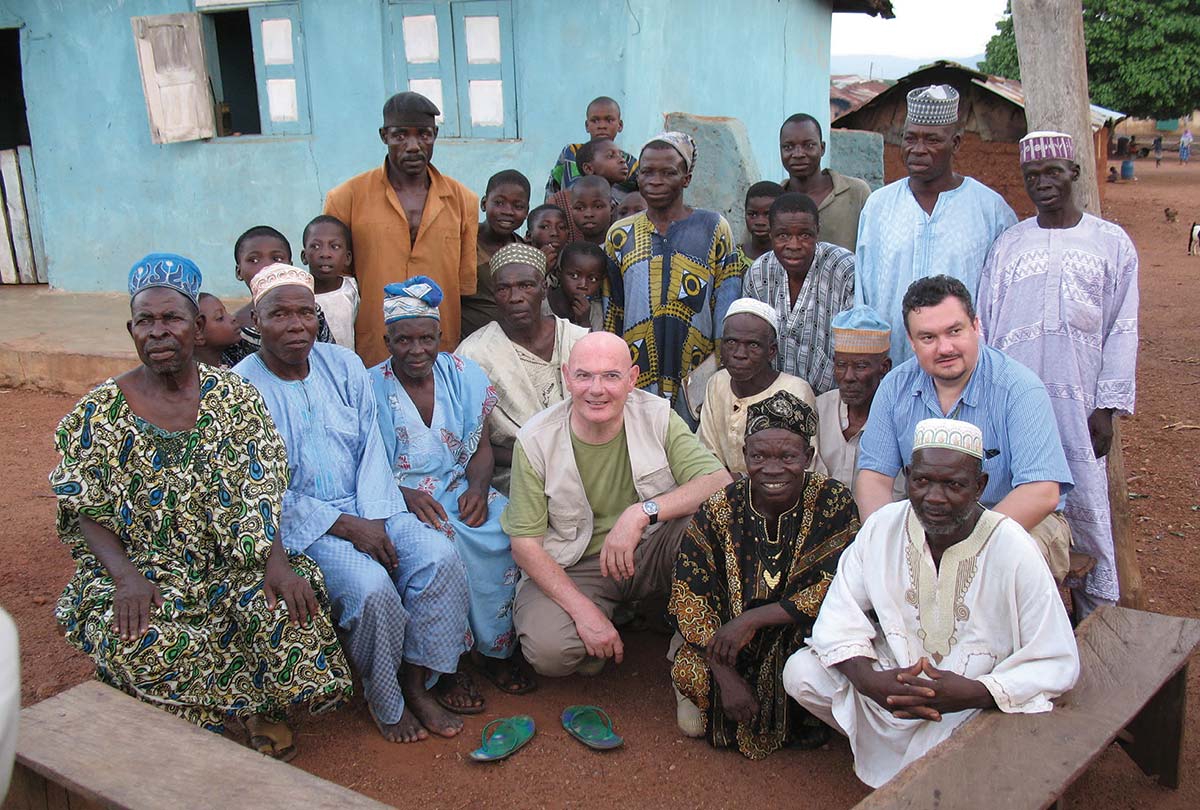
One of the people familiar with his work was Nigerian jewelry designer and advocate for the African jewelry industry, Amina Okpukpara. “I met JC several years ago because of a 2007 report he did on the Nigerian gem sector, which was shared with me by a Ministry of Mines director who also gave me his contact info. We developed a mentor-friend relationship. JC understood the African gemstone terrain and encouraged me in my various endeavors that could positively impact the African gemstone industry.”
Jean Claude’s dedication to improving the global gemstone industry extended to other international projects, such as consulting with the UN’s Interregional Crime and Justice Research Institute (UNICRI) and the OECD, among others, according to Stephan Reif, a gem dealer and close friend. JC even arranged for the ICA leadership to be invited to OECD meetings.
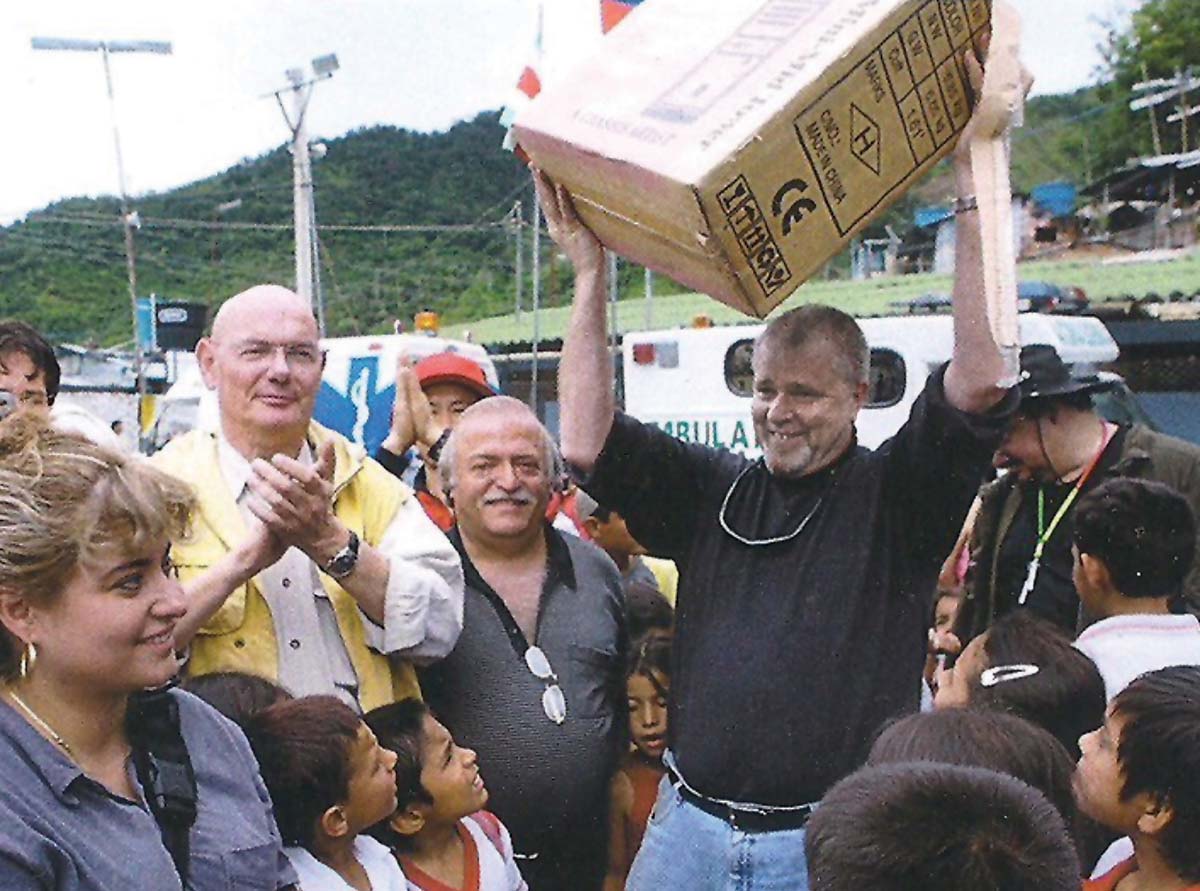
On the non-governmental side, Jean Claude served on the advisory board for the University of Delaware’s Gemstones and Sustainable Development Knowledge Hub and advised other groups on supply-chain concerns. In 2019, JC was also appointed to RJC’s Standards Committee because of his advocacy for ethics in the industry.
Many invitations also came JC’s way to visit private mining and cutting operations, pearl farms, and other exotic places related to the gem and jewelry world. He often traveled to them with Catherine Munier, his companion for the last six years.
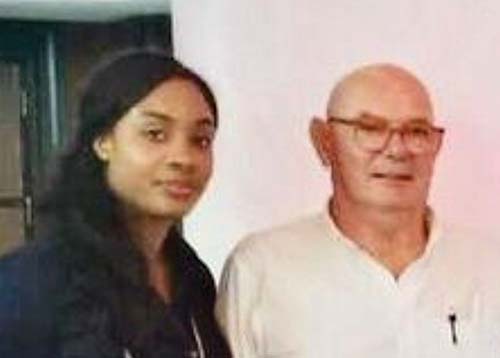
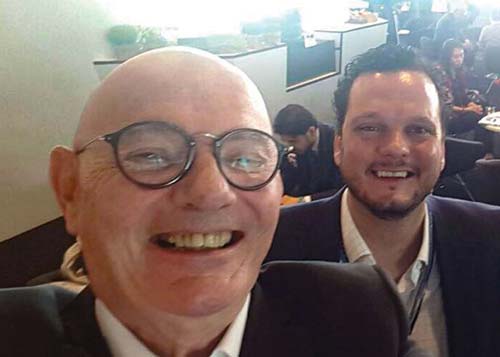
“I met Jean Claude in 2014 and could not have imagined, at the time, of all the places around the world that I would be traveling to with him,” says Catherine Munier. “From navigating canals in France to visiting peridot mines and Apaches in Arizona, from the gem markets of Beruwala in Sri Lanka to the Pink City of Jaipur, from the shows in China and Hong Kong to the pearl farms in Mexico, there was never a dull moment.”
She continues that “Jean Claude was always curious and adventurous. We shared the same love of wine, food, museums and, of course, music.” Catherine moved with him to Bangkok in 2018, and was with him when they both caught Covid. She was unable to see him in his last moments or even attend the memorial service held at the Bangkok hospital because she was being treated in a separate section. She understandably laments the all-too-short time they spent together. His passing has indeed left a hole in her heart.

InColor – ICA’s Flagship
InColor was indeed one of JC’s favorite achievements. He felt it was a magazine “that went beyond being an association magazine to be a vehicle of information for the trade and even the public,” as he often said. To learn about his relationship to the magazine—how it evolved and the struggles he faced to keep it going—the very informative interview conducted by Vincent Pardieu and Justin Prim on 5 March 2021 is available on Field Gemology’s YouTube channel:
Known for his gem expeditions around the world, Pardieu recalls that he met JC in 2005 while working for the AIGS lab in Bangkok. “We became immediate friends. He had a lot of information about what was going on in the trade, knew many contacts, and encouraged me to go into the field. It was around this time that InColor was started, which provided great insight into the industry with writers who offered different perspectives.”
InColor was different from other magazines in that it offered a balance between mining, gemology, jewelry design, book reviews and more. JC brought in a variety of contributors. Among them was journalist and blogger, Richa Goyal Sikri. “Since JC’s passing, I have stopped myself on numerous occasions from picking up the phone and sending him a text. I still can’t believe he’s gone. He leaves behind an incredible body of work, which I know will continue to educate and inspire us and future generations.”
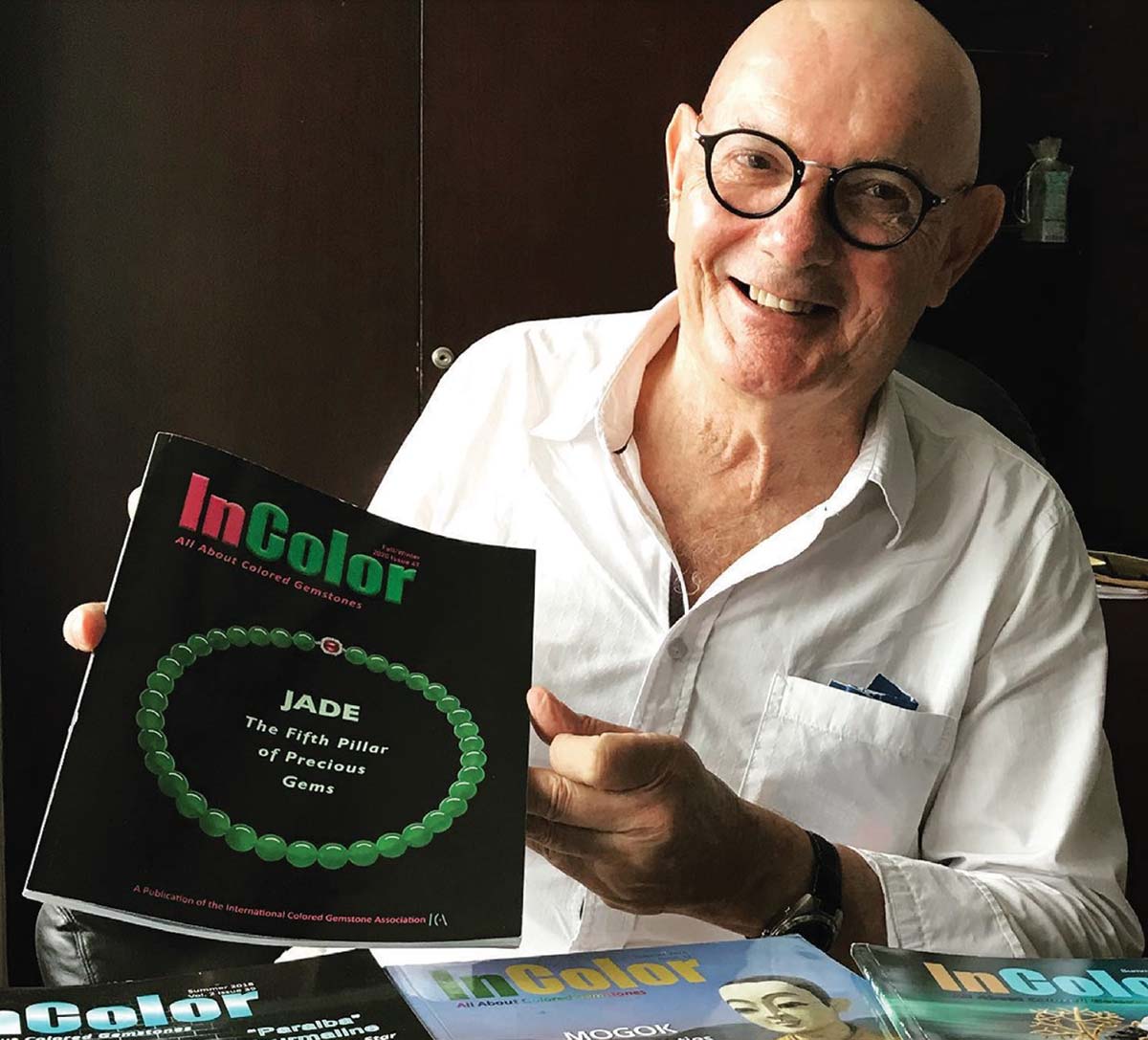
Another contributor was French gemologist and blogger Marie Chabrol. “I met Jean-Claude first by phone in 2007 and then in person some years later at the gem gathering Gemmologie à Poil, held in the small French town of Poil. When he asked me to write something for InColor, I thought it to be a really big challenge, but I am grateful that he pushed me to go out of my comfort zone.”
Poil was the meeting point for many gemologists and enthusiasts in Europe. Marie-Laure Cassius-Duranton recalls spending time with JC and Catherine at the gathering. “Every year, we all stayed in the same hotel and breakfast was a special occasion when we listened to Jean Claude for hours talking about the industry. He had exceptional energy, enthusiasm, intelligence, and generosity. I’m grateful for having had the opportunity to write for InColor. I was aware of his health problems, but he was so full of life that he seemed invincible.”
In 2017, Jean Claude co-founded Imperial Colors with daughter Zoe, who had moved to Thailand in 2013. He moved to Bangkok in 2018. “It was good to be in Bangkok. It is the natural place to be for gemstones,” JC explained.
JC and Zoe frequently traveled to Pakistan and partnered with a mine in Swat to bring emeralds to Bangkok for cutting. They also organized a cutting facility in Sri Lanka, where they trained ten people to cut the rough they received in Bangkok. “He was not just a father but a mentor. I loved traveling with him and will always remember the numerous adventures we had on our trips. He was passionate and lived life to the fullest, not fearing anything. He always tried to find solutions and make things right in his own way.” Zoe is indeed carrying on his legacy in the gemstone business.
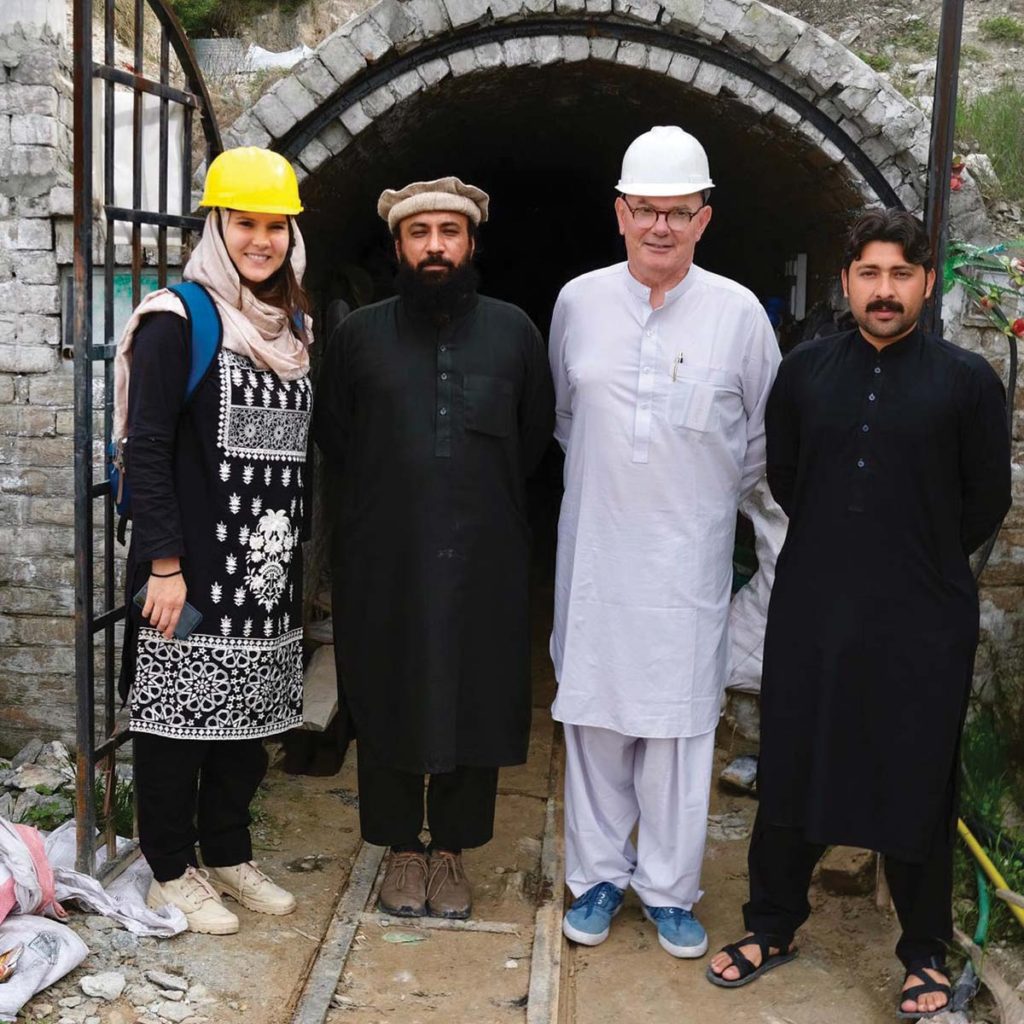
In 2020, Jean Claude decided to retire from InColor after 15 years as Editor. But he did not retire from the world of gemstones. He continued his activities with international agencies, with Imperial Colors, and was working on an emerald book with Gaston Giuliani, a Colombian emerald expert (and frequent InColor contributor).
For Giuliani’s second book Émeraudes, tout un Monde, “Jean Claude wrote his final article on the emeralds of Pakistan, just before passing away,” Guiliani says with great sadness. “JC was serious, organized, passionate, and irreproachable in his business as well as in his friendships. He was a man of the field, a veritable adventurer of the modern age, always ready to help others.”
These sentiments are echoed by Pascale Savigny, the ICA Ambassador to France, “JC was never stingy with his good advice, his kindness, and his generosity. I was happy to share some good times with him, and these memories will remain with me forever.”
While Jean Claude may have lived dangerously, there was one danger that he could not avoid. He passed away 3 May 2021 in a Bangkok hospital from Covid-related causes, while Zoe was stuck in quarantine after quickly returning to Thailand from overseas. JC’s good friend Prida Tiasuwan, owner of Pranda, kept in constant contact with her and the doctors. After his passing, Tiasuwan presided over the memorial service at the hospital.
As Wilson Yuen, a former ICA President, remarked: “Jean Claude was a great friend and there are no words to describe his loyal contributions to the gem industry and to InColor. He truly deserves a posthumous Lifetime Achievement Award.”
[The last contact I had with Jean Claude was just before he was transferred to intensive care. His spirit was optimistic, so it was a terrible shock to learn of his passing. The sad news traveled quickly. Posts flooded in on social media and hundreds of people around the world sent condolences to his family.]
Jean Claude Michelou was indeed a fearless, one-of-a-kind adventurer and pioneer in the gem industry. He will be missed.



